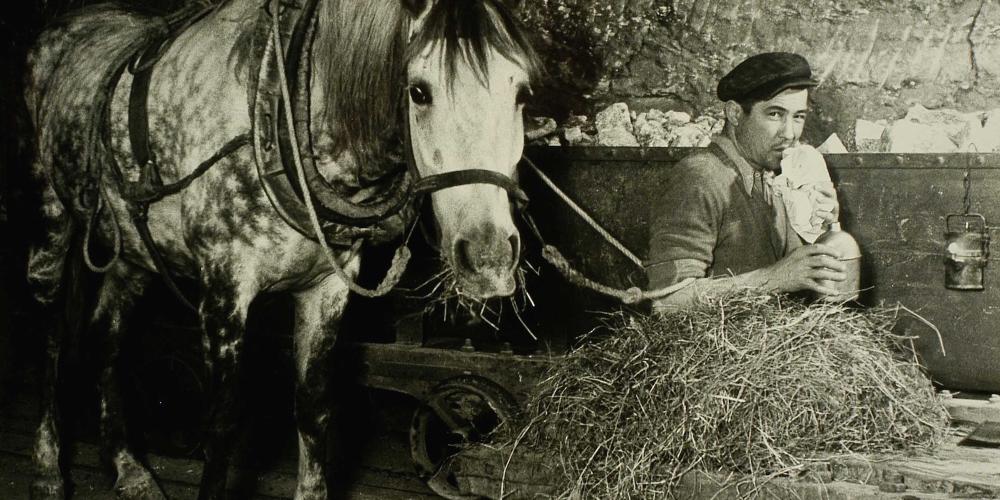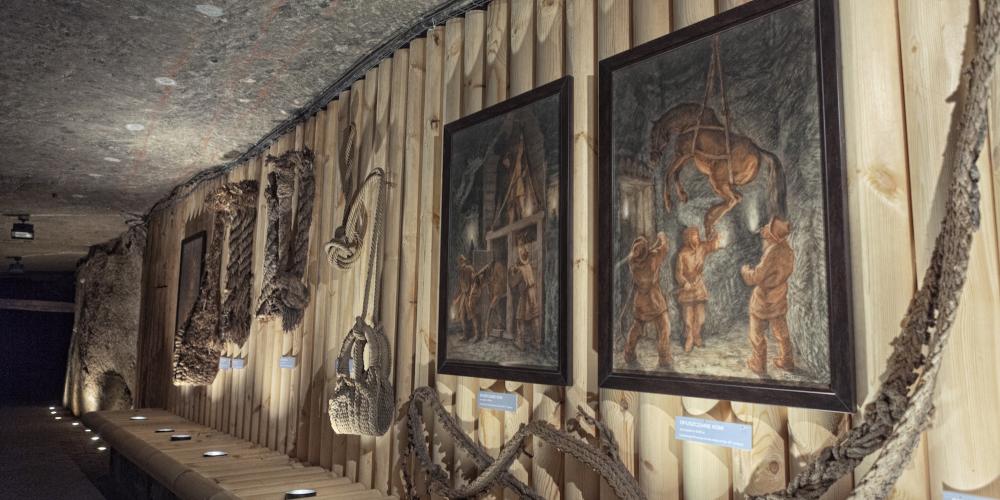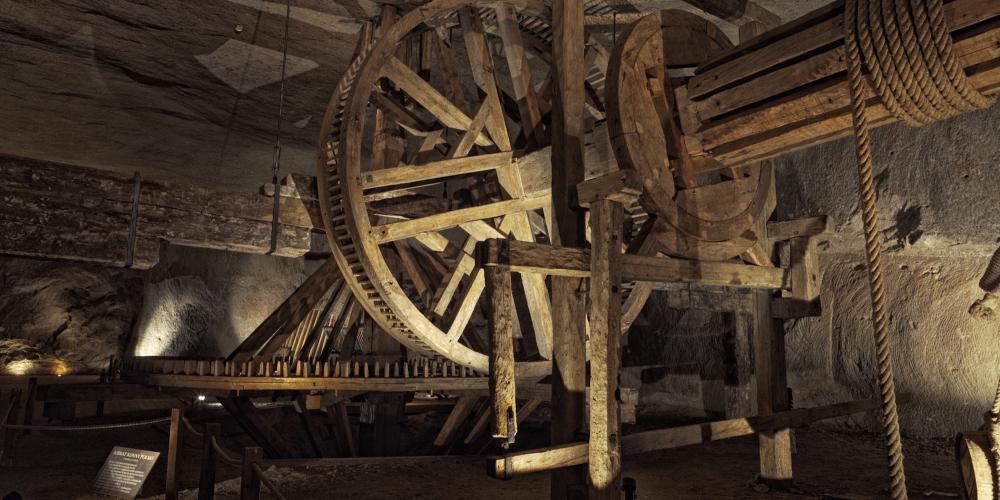The important role of Horses in the Mines

Horses appeared in the Wieliczka and Bochnia Mines only at the beginning of the 16th century. They worked both in horizontal transport, pulling trolleys with salt, and in vertical transport by powering treadmills. Over time, there were over 100 horses in the Wieliczka Mine.
A life underground
But how were they brought into the mine? Initially, large boxes were used for this purpose, which resembled cages in an elevator, and from the 19th century, the horses wore a special harness. The horse was tightly bound and secured so it would not kick and hurt itself, and then it was slowly lowered down the shaft. The animals, once lowered to the mine, spent almost all their lives there. Very rarely, and only in exceptional cases, were they brought to the surface during their lifetime. Some horses were could not adapt to the mine, and went crazy or simply died. On average these animals worked for about 10 years, but some worked in the mine for up to 24 years.
Their work was hard but very helpful, so they were greatly valued. As early as in the 16th century, the mining authorities included in the mining instructions requiring standards for food, working conditions, and rest for horses. The general supervision over these animals was exercised by a groom, and the direct care was carried out by the drivers who directed the work of horses harnessed to the treadmills. The greatest emphasis was placed on keeping animals safe, to the extent that negligence was punishable by monetary penalties, and even could result in expulsion from work. Thus, the horses in the mine had comfortable and dry stables, and both mines built horse-friendly routes called "horse roads." Careful dietary standards were obeyed. The horses also had constant care from a vet and blacksmiths. The animals were generally in good health, and it turned out that despite many years of underground work in a dark and salty environment, they did not lose their eyesight.
The end of an era
In the 20th century, the development of mine mechanisation gradually limited the use of horses underground. They were no longer needed to transport salt, but they helped miners during renovations and in places where mechanical devices could not be used. In the 1970s, only two horses remained, and the last mare, Baśka, left the Wieliczka Mine on the 14th March 2002, as the last horse working in a Polish mine. Kuba, the last horse from the Bochnia Mine, left much earlier—in 1961. Officially, horses from Polish mines were withdrawn under a regulation issued five years earlier.

Baśka worked in the Wieliczka Mine for 13 years, mainly in security works in narrow aisles. The last place of her work was the Gołuchowski Chamber. When she went to the surface, she was 16 years old. The miners said goodbye to her "like to a real miner" with the traditional miners' greeting "God Bless". She was taken to the surface during the night shift, so her eyes could slowly become accustomed to the light.
Was Baśka happy with the new situation? Probably not. She missed everything—the former environment in which she felt safe, the tasks she knew perfectly well, and the people who took care of her, and she could not find comfort in the new place. Eventually she was taken by a hostel in Jankowice, and after a year of difficult acclimatisation, she accepted her new circumstances and new people, and began to enjoy life on the surface in her well-deserved retirement. She passed away on the 20th December 2015, thus ending the history of horses in the Wieliczka Salt Mine.



